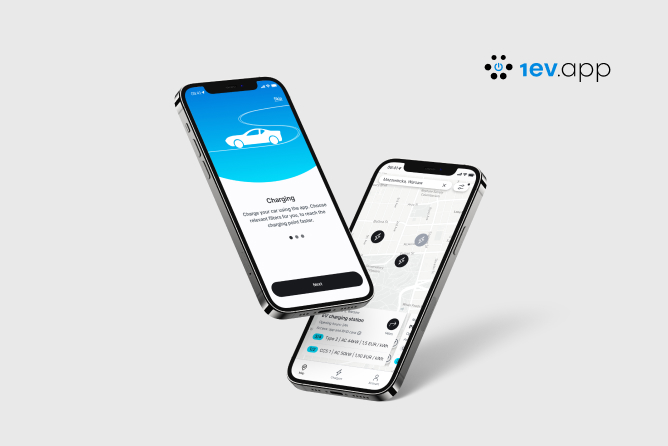Until recently, artificial intelligence (AI) was seen as a futuristic concept—more buzz than reality. Today, it's a practical, working tool that is reshaping how businesses operate every day. Regardless of the industry or size of the company, AI can accelerate processes, reduce costs, and open new opportunities for growth.
In this article, we’re focusing not on definitions or abstract theories, but on real, practical applications of AI in business. We’ll show how companies—including mid-sized organizations—implement artificial intelligence to solve real-world problems and achieve measurable results.
How AI is changing customer service – It’s more than just chatbots
One of AI's most visible and popular uses is in automating customer service. But today’s solutions go far beyond basic chatbots responding to FAQs. Modern AI systems can analyze emotions in a caller’s voice, understand user intent, and even adjust communication tone based on the customer's style.
Companies are using these technologies not only in support centers, but also in sales interactions—for example, recommending tailored offers based on previous interactions.
Here’s a real-world example: a SaaS company implemented a voicebot that handles initial calls from clients requesting consultations. By detecting keywords and analyzing tone, the bot automatically assigns the inquiry to the right consultant, reducing response time by more than 60%.
Personalizing sales and marketing through artificial intelligence
Traditional marketing based on demographic segmentation is giving way to hyper-personalization driven by behavioral data. AI analyzes hundreds of signals—from purchase history and time spent on site to microinteractions with email campaigns—to build dynamic, personalized customer journeys.
For instance, an e-commerce store implemented an AI-powered recommendation engine that not only suggests products but also learns user preferences in real time. As a result, conversion from recommendations increased by 23%, and average cart value by 18%.
In advertising campaigns, AI can automatically select creatives, test headlines, and optimize budgets based on performance—without any manual input from a marketer.
Data analysis and business decision-making powered by AI
AI excels in scenarios where data is too complex or vast for humans to process quickly. AI-based systems can combine information from various sources—CRMs, ERP systems, social media, market data—and deliver actionable insights or even strategic recommendations.
Take the example of a retail company that used AI to analyze three years of sales data. With machine learning algorithms, the system identified best-selling products, ideal promotion timing, and regions with untapped market potential. As a result, the company optimized logistics and increased seasonal sales by 14%.
Qarbon IT Case Study – Business analysis with AI support
One of Qarbon IT’s practical AI implementations involved a project for a client in the finance sector who needed efficient business potential and market trend analysis.
In this project:
- We designed and implemented an AI model that analyzed data from market reports, social media, and industry databases.
- The algorithm identified behavioral patterns among competitors and highlighted potential market gaps.
- The final result was an interactive data visualization dashboard and a strategic recommendation report.
The implementation reduced the analysis timeline from several weeks to just a few days and provided the client with concrete insights for investment decisions.
You can read the full case study here:
Business analysis with AI – Qarbon IT Case Study
AI in logistics and manufacturing – Boosting efficiency and cutting costs
In manufacturing and logistics, AI is used for predictive maintenance, delivery route optimization, and inventory forecasting. Systems learning from sensor data can detect early signs of machine inefficiency and suggest maintenance proactively. This minimizes downtime and significantly lowers maintenance costs.
In transportation, algorithms that analyze traffic conditions, weather data, and GPS signals can determine the most efficient delivery route—even in real time. In one project, AI shortened average delivery time by 12% while reducing fuel consumption by 9%.
AI in recruitment and HR – Smarter hiring processes
Human Resources departments increasingly rely on AI-powered tools to automate candidate selection. These systems analyze resumes, compare experience against job requirements, and even conduct preliminary competency assessments.
At Qarbon IT, we’re seeing growing interest in custom AI recruitment platforms that shorten hiring timelines and help companies better match candidates with their organizational culture.
Where to start with AI in your business?
While AI implementation may seem expensive or complex, many companies see great results with custom, scalable solutions tailored to their needs. Not every organization needs a large AI platform—sometimes, a simple model automating one key process (such as document classification or transaction risk assessment) is enough.
The key is to start with an analysis of your business goals and technical capabilities. From there, proceed iteratively—building your competitive edge step by step.
If you're wondering where to begin, explore our Data & AI development services. We help companies not only design but also implement data- and AI-driven systems that deliver real business value.






.jpg)

.jpg)

.jpg)


.jpg)
.jpg)

.jpg)
.jpg)

.jpg)

.jpg)
.jpg)
.jpg)

.jpg)
.webp)

.webp)


.jpg)









.webp)


.webp)






























.webp)





.webp)



.webp)


.webp)



.webp)













